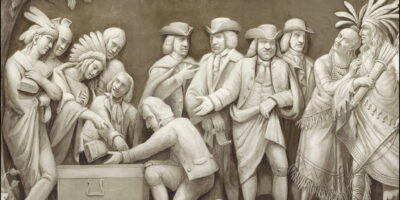Modeling Money as a Unit of Account
Formal monetary theory has deepened our understanding of the role of money. However, as I wrote in a different post, money’s role as a unit of account continues to be elusive to economic theorists, who have instead focused on money’s role as a medium of exchange or store of value.
A recent paper in Econometrica by Matthias Doepke and Martin Schneider takes the step to model money as a standardized unit of account. By a standardized unit of account, I mean that most future payments will be denominated in a common good. The mechanism is simple, even if the math in the paper is complicated.
Suppose you sign a contract where you receive goods today and need to pay back your debt in some different goods in the future. The contract will specify a unit of account for that contract. Whoever gave you goods may be willing to accept different goods: gold, wheat, coins, government paper, gift cards, or something else. What should you promise to pay back in? When considering just one contract, it is not immediately clear why one unit should dominate the economy. Some people will be willing to accept gold; some will be willing to accept wheat.
Suppose you agree to pay back your debt in gold. That contract comes with some risk if the relative price of gold fluctuates. If gold becomes more valuable between today and tomorrow, you have to pay back more in real terms and you are hurt as a debtor. If gold becomes less valuable, you have to pay back less and you are helped as a debtor.
But a crucial thing about money is that it is not about one-off trades. Money is part of a whole system of exchange. At the same time you are a debtor that agrees to pay back in gold, you could also be a creditor for a different trade. Someone will owe you tomorrow. Given that you pay back your debts in gold, what good should you ask to be paid back in for your credits?
Here is where the standardized unit becomes helpful. You reduce your own risk if you use the same unit of account as in the first contract: gold. Any risk you have as a debtor is offset by your risk as a creditor. Therefore, in a world with credit chains, where some people are creditors and debtors at the same time, the risk is reduced. That is a force driving the adoption of a unit of account that does not follow immediately from money’s other roles and that the formal model helps clarify.
All three roles are important. Kurt Schuler was certainly correct when he explained that “three textbook functions of money … in one good makes it far more powerful and significant than if the functions are separated.” Still, there is value to highlighting each individual role and learning how it works. Doepke and Schneider have created a helpful model to highlight the role of money as a unit of account.











